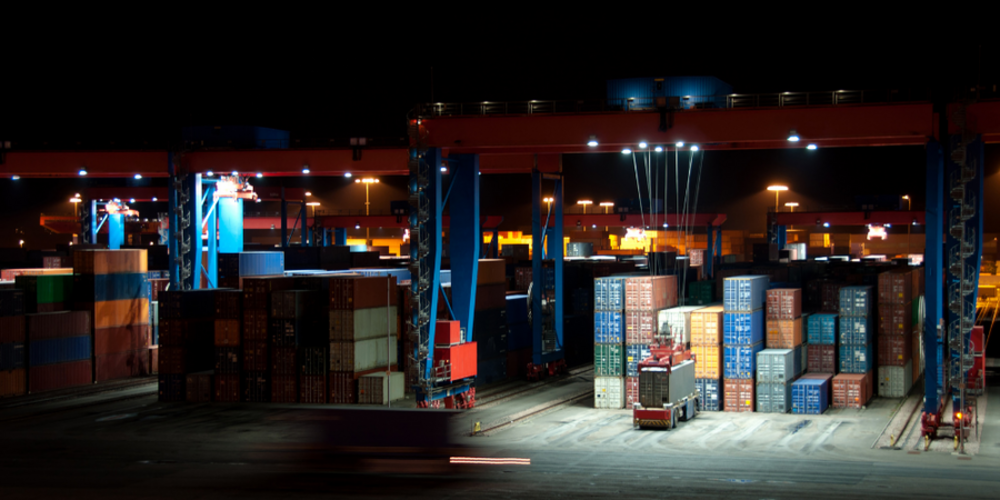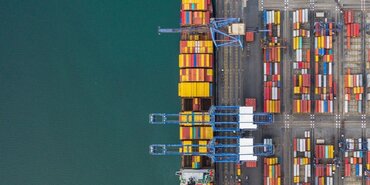TT Talk - Why ports and terminals need to plan for power failures

Power outages are no longer rare, isolated incidents in the transport and logistics sector. With the increasing complexity of ageing energy grids and growing reliance on electrical and digital systems, blackouts are becoming both more frequent and disruptive – with potentially severe commercial, safety and insurance implications. Ports and terminals should take steps now to make their operations more resilient to power failures, which should include the possibility of planning and rehearsing a safe shutdown.
A growing hazard
There are various and often unpredictable reasons for power failures, with a minor incident often triggering a major outage. For example, in April 2025, a major blackout occurred across the Iberian Peninsula when a transformer tripped and caused a cascading failure across Spain, Portugal, Andorra and parts of southwestern France. Voltage drops triggered protection systems, cutting off power for up to 10 hours and bringing transport systems to a standstill.
Certainly, the increasing mix of renewable and conventional energy sources is making balancing electricity grids more difficult. Synchronising intermittent sources such as wind and solar with baseload power from fossil fuel and nuclear generators is technically challenging and more prone to failure. Extreme weather is also becoming an issue: substations are often not designed for today’s climate extremes and are vulnerable to surges and failures during storms or heatwaves.
Increasing exposure
In addition to the growing hazard of power failures, ports and terminals are increasingly vulnerable, not least due to their electrical and digital dependency. Port and terminal operating systems, communications and inventory management are often now all digital so that, when the power goes, so does access to procedures, contact lists and operational data.
The expanding array of electrical equipment at ports and terminal also makes operators ever-more vulnerable. For example, high-voltage quay cranes are not always resilient to sudden shutdowns and improperly restarting them can cause cable faults and damage drives. Electrical vehicles and hand-held plant will stop working when their batteries run out, and water for drinking and firefighting will stop flowing when the pumps lose power.
Furthermore, in cases of regional power failures, resources to fix the problem will be in short supply. In a major outage, emergency services will get first refusal on a finite supply of generators, so hiring one in the immediate aftermath is likely to be difficult. Electrical contractors will also be in high demand, making repairs and recovery even slower.
Reducing the risk
Port and terminal operators should take the following crisis management steps now to mitigate the commercial and safety risks of a power failure. The first and most important step is a criticality assessment, in which operators find out which systems are essential and how long they can be offline before operations are adversely affected. For example, a one- or two-day outage might be manageable, but 10 days could be catastrophic.
The next step is to build redundancy into information technology infrastructure. The aim is to ensure that business-critical servers, websites and communication tools are resilient to power outages. For example, consider hosting critical documents behind a login page on a separate server estate. QR codes can also help, but only if mobile networks are still functioning.
Emergency power outage planning, including arrangements for back-up power sources such as generators or batteries, is also essential. For generators this includes maintaining appropriate stockpiles of fuel on site and potentially having hand pumps for fuel transfer from handling equipment if the outage persists.
Often the most realistic, responsible and safe response to a power failure might be a complete shutdown rather than scrambling to stay operational. It is therefore vital to have a safe shutdown protocol in place.
Staff should be drilled to stop work as soon as it becomes unsafe to continue working, such as in a dark building with no ventilation, sprinkler or alarm systems. Outside, handling equipment may stop mid-lift, so ensure too that fail-safe braking and emergency lowering systems are in place and well-practiced. It also advisable to shut the gates to prevent a dangerous buildup of traffic on site, recognising the potential impact to the local hinterland.
Finally, consider how to increase the resilience of communications given there could be a total mobile telephone network failure in a national outage. For example, VHF radios and other non-centralised systems will continue working while the batteries hold out, and keeping paper copies of emergency plans and contact lists will ensure these can be quickly accessed when screens go dark.
Planning for recovery
As well as reducing the immediate impacts of a power failure, port and terminal operators also need to plan for the recovery phase. For example, restarting high-voltage systems is not simple – power surges can damage equipment, and older cables are especially vulnerable. Without regular drills, recovering from the first real outage is likely to be challenging.
Traffic management will be critical. There could be hundreds of trucks backed up at a gate, so it is important to have a protocol for communicating with drivers, customers and authorities about how soon they can enter and resume loading and unloading.
Staff welfare must also not be overlooked. In prolonged recoveries from an outage, access to food, water and salary payments may be disrupted. Keeping the workforce informed and supported is vital.
Conclusions
Blackouts are a real, present and growing challenge for port and terminal operators worldwide, with potentially severe commercial, safety and insurance implications. The best way to ensure resilience is preparation, which includes reviewing and updating criticality assessments, ensuring communication channels are robust, planning for both local and national power outages, and conducting regular drills – including for safe shutdown.
Key takeaways
- Power outages are increasing in frequency and severity due to ageing grids, renewable energy integration challenges and extreme weather events
- Modern ports face heightened vulnerability through digital dependency and expanding electrical equipment arrays
- Criticality assessments identify essential systems and acceptable offline durations for effective planning
- IT infrastructure redundancy and backup power arrangements provide operational resilience
- Safe shutdown protocols often represent the most responsible response to power failures
- Communication resilience requires non-centralised systems and paper-based backup documentation
- Recovery phase planning must address high-voltage system restarts, traffic management and staff welfare
- Regular drills ensure preparedness for both local and national outage scenarios
Frequently asked questions
Why are power outages becoming more common in ports and terminals?
Ageing energy grids, increasing renewable energy integration creating grid balancing challenges, and extreme weather events overwhelming substations designed for milder conditions all contribute to rising power failure frequency and severity.
What should ports prioritise during a power outage?
Safety takes precedence - implementing safe shutdown protocols when conditions become unsafe, ensuring fail-safe braking systems on handling equipment, and potentially closing gates to prevent dangerous traffic accumulation whilst maintaining staff welfare.
How can ports prepare for extended power failures?
Conduct criticality assessments, build IT infrastructure redundancy, maintain backup generators with fuel stockpiles, establish communication systems independent of mobile networks, keep paper emergency plans, and conduct regular shutdown and recovery drills.
Documents
TT_Talk_-_Edition_327__Chinese_.pdf (423 kB) 22/10/2025
- Author
- Harry Palmer
- Date
- 06/10/2025





